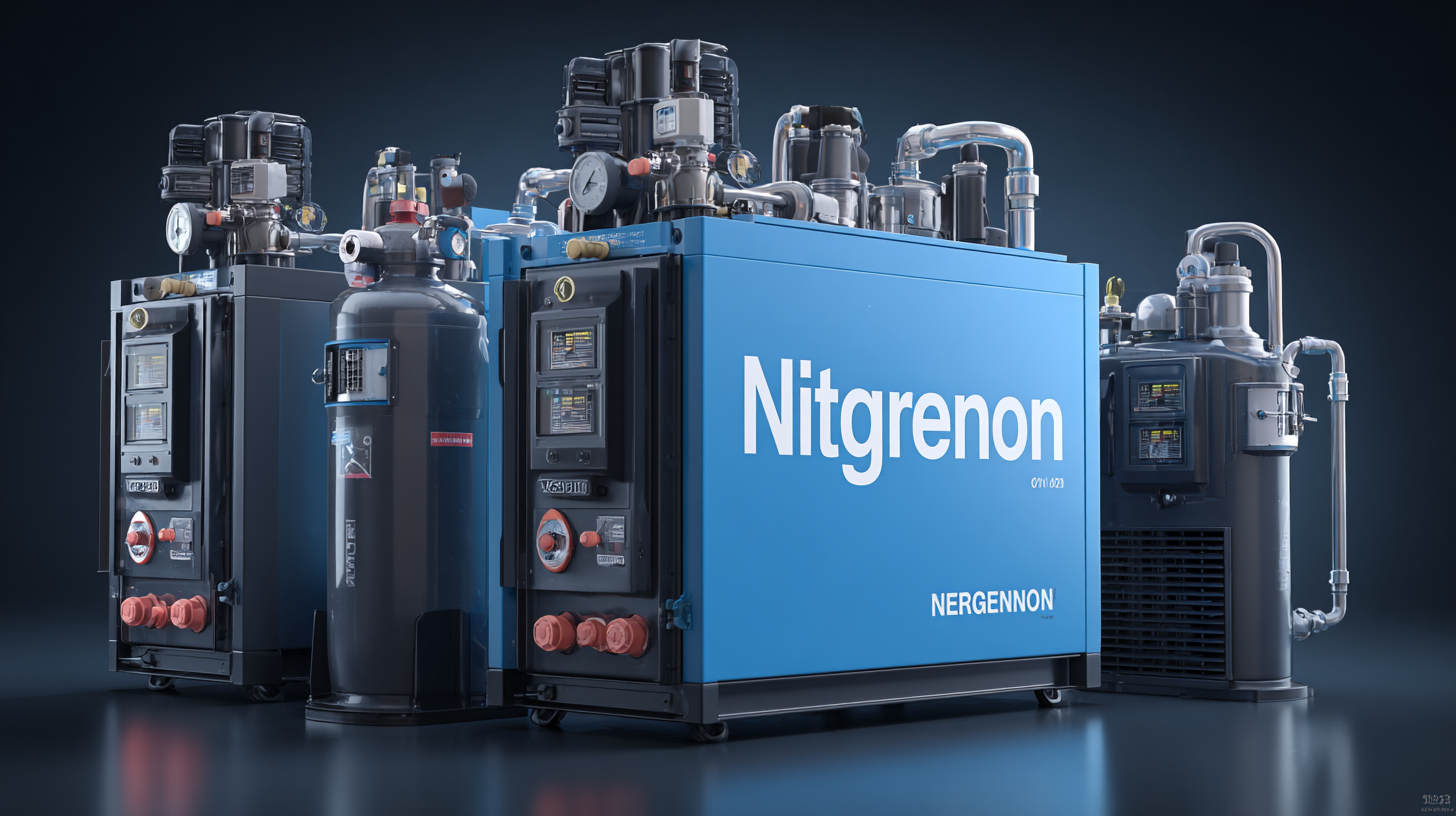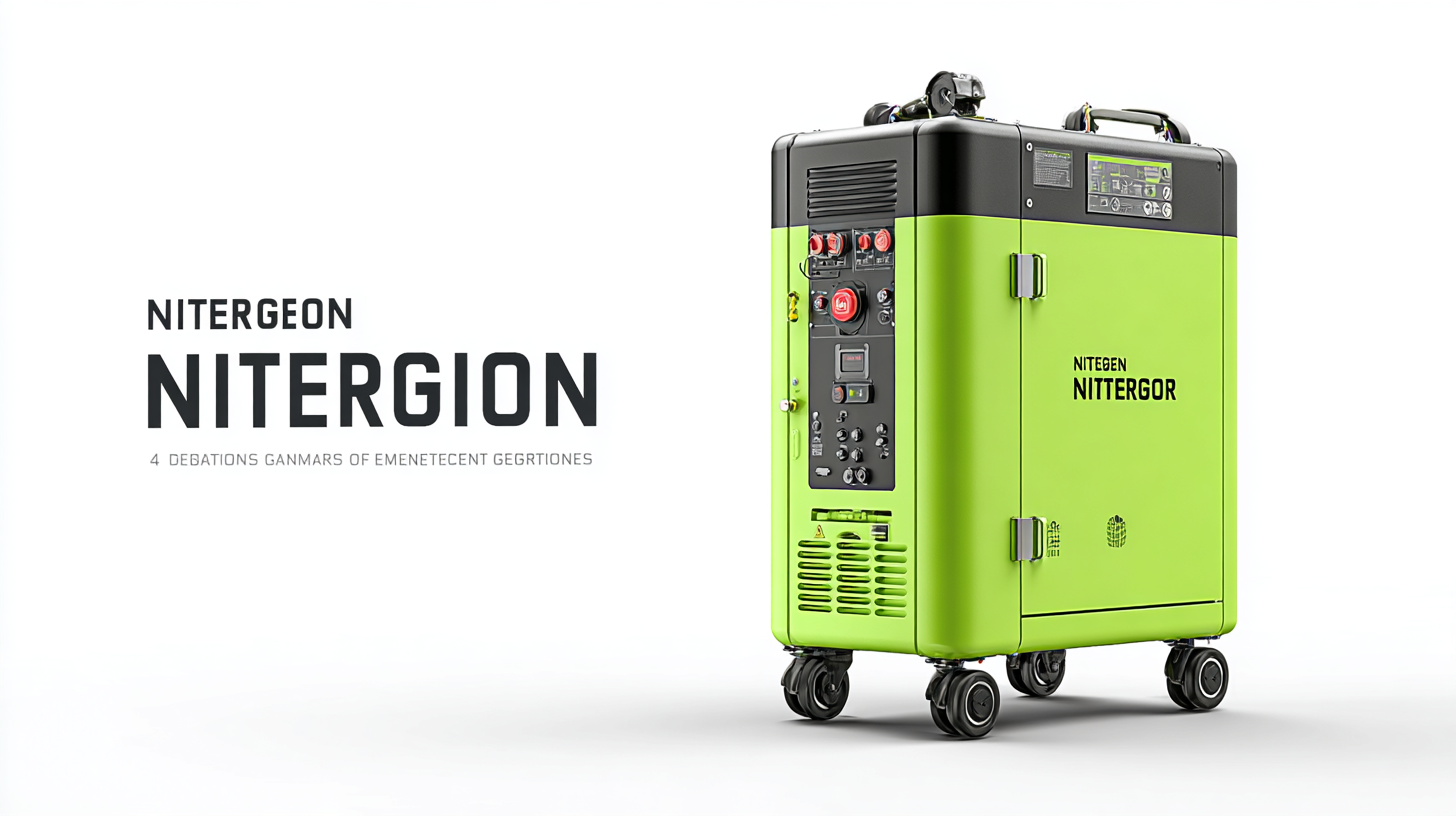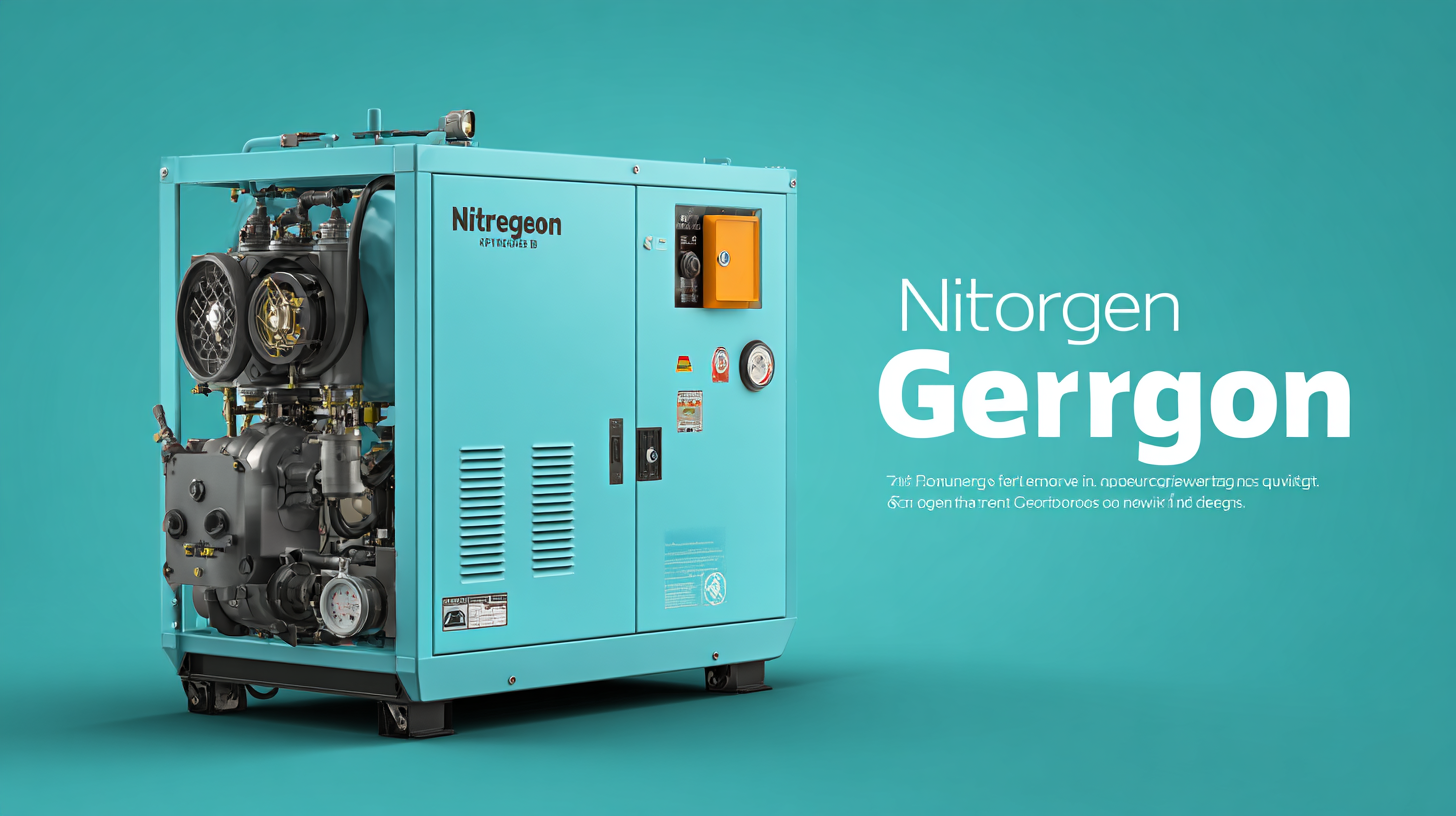
Exploring the Features of Various Nitrogen Generators and How to Choose the Right One for Your Needs
In today's industrial landscape, the demand for nitrogen generators has surged, driven by the growing need for efficient and reliable nitrogen supply across various applications such as food packaging, electronics manufacturing, and pharmaceuticals. According to a report from Future Market Insights, the nitrogen generator market is expected to reach USD 3.5 billion by 2028, growing at a CAGR of approximately 6.5% from 2021 to 2028. This growth is a testament to the increasing recognition of the advantages offered by in-house nitrogen generation over traditional supply methods, including lower costs and enhanced supply reliability. However, with various types of nitrogen generators available, including pressure swing adsorption (PSA) and membrane technology, selecting the right nitrogen generator for your specific needs can be complex. This blog will explore the features of different nitrogen generators and provide guidance on how to make an informed decision tailored to your operational requirements.

Key Features to Consider When Evaluating Nitrogen Generators
When selecting a nitrogen generator, several key features should be closely evaluated to ensure it meets your specific requirements. First and foremost, the purity level of the nitrogen produced is crucial. Depending on your application—be it pharmaceuticals, food packaging, or electronics manufacturing—different purity levels may be needed. It's essential to review the generator's specifications to confirm it can deliver the required nitrogen quality consistently.
Another important feature to consider is the generator's capacity and flow rate. Understanding your operational needs will help determine the volume of nitrogen you require and whether the generator can keep up with your demand. Additionally, energy efficiency is worth considering, as a more efficient generator can lead to cost savings in the long run. Factors such as the type of technology used—membrane or pressure swing adsorption—can greatly influence both productivity and energy consumption, making it vital to choose a model that aligns with your workload and sustainability goals.
Key Features of Nitrogen Generators
This chart illustrates the comparative efficiency of various nitrogen generator features based on average industry standards. The features considered include Purity Level, Flow Rate, Operational Cost, and Maintenance Frequency.
Types of Nitrogen Generators: A Comprehensive Overview
When it comes to nitrogen generation, understanding the different types of nitrogen generators is crucial for selecting the right system for your needs. The primary types include
pressure swing adsorption (PSA) generators,
membrane nitrogen generators, and
cryogenic nitrogen generators. Each method has its unique features, advantages, and ideal applications.
PSA generators are widely used in industries that require high purity nitrogen, such as pharmaceuticals and electronics. They work by using adsorbent materials to separate nitrogen from other gases in the air.
On the other hand, membrane nitrogen generators are more suitable for applications with lower purity requirements, such as food packaging and welding. These systems use semi-permeable membranes to produce nitrogen quickly and efficiently.
Lastly, cryogenic nitrogen generators, while costly, are perfect for high-demand applications due to their large-scale production capabilities and ability to achieve the highest purity levels.
Choosing the right nitrogen generator depends on several factors, including your specific application, required nitrogen purity, and production volume. By understanding the different types available, you can make an informed decision that aligns with your operational needs and budget constraints.
Factors Influencing the Selection of the Right Nitrogen Generator
Choosing the right nitrogen generator for your specific needs involves considering several key factors. Firstly, understanding the required purity level is crucial; applications such as food packaging or pharmaceuticals may require purities above 99.999%. According to a report by Research and Markets, the industrial nitrogen generator market is projected to grow significantly, indicating a rising demand for high-purity solutions across diverse sectors. Thus, assessing the purity requirements based on your industry standards is essential for optimal performance.
Another important factor is the generator's capacity and flow rate, which should align with your operational demands. For instance, a smaller facility may only need a generator capable of producing 10 to 20 Nm³/h, while larger plants may require output exceeding 100 Nm³/h. Evaluating your current and future nitrogen demands can prevent potential production bottlenecks.
**Tip:** Always consider the total cost of ownership (TCO), including maintenance and operating expenses, rather than just the initial purchase price.
**Tip:** Consult with manufacturers to ensure they provide robust technical support and flexible financing options, as these can significantly impact long-term satisfaction and operational efficiency.
Exploring the Features of Various Nitrogen Generators and How to Choose the Right One for Your Needs
| Feature/Specification | Generator Type | Flow Rate (Nm³/h) | Purity (% N₂) | Power Consumption (kW) | Operating Pressure (bar) | Price Range ($) |
|---|---|---|---|---|---|---|
| Membrane Nitrogen Generator | Membrane Separation | 5-100 | 95-99 | 3-10 | 1-7 | 5000-30000 |
| PSA Nitrogen Generator | Pressure Swing Adsorption | 10-300 | 99.99 | 5-15 | 4-10 | 15000-50000 |
| Cryogenic Nitrogen Generator | Cryogenic Distillation | 50-1000 | 99.999 | 20-100 | 5-20 | 100000-500000 |
| Compact Nitrogen Generator | Membrane or PSA | 1-10 | 93-95 | 1-3 | 0.5-5 | 2000-10000 |
Cost vs. Efficiency: Balancing Your Investment in Nitrogen Generators
When considering the investment in nitrogen generators, striking a balance between cost and efficiency is crucial. According to a recent report from MarketsandMarkets, the global nitrogen generator market is projected to reach $7.9 billion by 2025, driven by the growing need for nitrogen in various industries such as food packaging, electronics, and pharmaceutical applications. However, selecting the right nitrogen generator involves not just upfront costs but also ongoing expenses related to efficiency and maintenance.
Efficiency plays a vital role in the overall cost-effectiveness of nitrogen generators. For instance, membrane technology generators often have lower initial costs compared to PSA (Pressure Swing Adsorption) systems, but the latter typically offers higher purity levels and lower operating costs over time. A study by TechSci Research indicates that while membrane systems can cost around $30,000, PSA systems, although more expensive upfront, can result in savings of up to 30% in operational costs due to their efficiency. Thus, understanding the specific requirements of your application can help determine the right type of generator, perfectly aligning with your financial and operational goals.

Maintenance Tips to Ensure Longevity and Performance of Nitrogen Generators
Maintaining nitrogen generators is crucial to ensure their longevity and optimal performance. Regular inspections and scheduled maintenance can help identify potential issues before they escalate. Start by checking the air intake filters; dirty filters can hinder airflow and reduce the efficiency of gas production. Cleaning or replacing these filters according to the manufacturer’s recommendations will maintain consistent performance.

Another key aspect of maintenance is monitoring the pressure and purity levels of the nitrogen produced. Regular calibration of pressure gauges and purity monitors ensures that the generator operates within the desired specifications. Additionally, it is vital to keep an eye on the overall condition of the generator, including hoses and electrical connections, which should be inspected for signs of wear or corrosion. Implementing a routine maintenance schedule not only extends the life of the nitrogen generator but also enhances its reliability, reducing downtime and associated costs.
